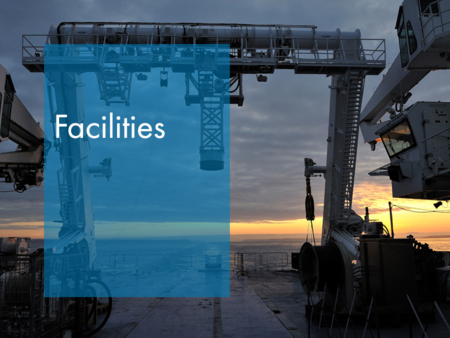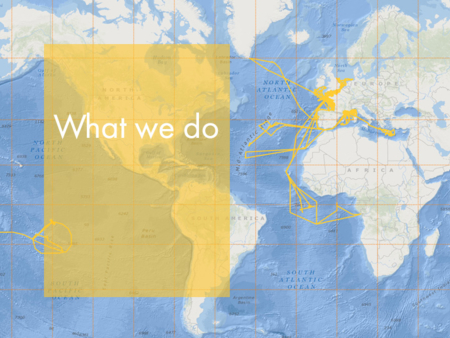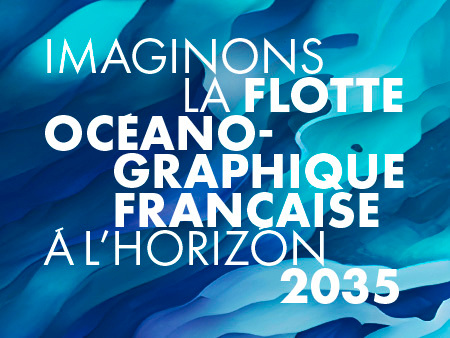1.1. The strengths of oceanography in France, international issues
1.1.1. Strengths
There is a list here of all permanent staff, researchers, teacher-researchers and physicists in the observatories, engineers and technicians who use the FOF (see table in Appendix 3) either directly (on-board) or by working on the data or samples from the campaigns. This inventory, conducted using the “FOF” filter, had never been performed before and required involvement from all relevant unit directors. The diversity of the feedback meant that it could not be treated with the expected granularity (for example, we cannot reliably identify the number of teacher-researchers).
Without claiming to be exhaustive, it seems that most of this staff are spread over sixty labs all over the country, mainland and overseas territory. These labs are three quarters Mixed Research Units (MRU) attached mainly to the INSU (30) or the INEE (16) and more than twenty Universities. These MRU are mainly owned by Ifremer, IRD and MNHN, but also CEA, CNES, BRGM or EPHE. The last quarter is essentially made up of Ifremer’s own units (15).
Out of 2600 researchers and 1500 engineers and technicians from these laboratories, just over 40% work with the FOF, so almost 1800 people with an IT/C ratio of a little over 1:2. If we included contract workers - engineers, PhD students and post-docs - this workforce would double to around 3600 users of the FOF.
Their distribution in terms of general topic is illustrated opposite, namely a little under a quarter from Marine Geosciences and paleo-environments (MG), just under a third in Physics-Biology-Cycles (PBC) and almost half in biological, fisheries and ecosystem research altogether (HAL & BEB).
All the FOF resources are used as the oceanographic campaigns are run on the station ships (35 labs out of 60) and on the coastal fleet (47) and open-sea fleet (49). If we cross topics and ship category, we can see quite naturally that there is a slight preference for the open-sea fleet in PBC, considerable use of station ships in the BEB community but most of the labs use all the FOF resources. This can doubtlessly be explained as strengthening the activities with both geographic (continent-coast-open sea) and topic interfaces.
In terms of topics, finer analysis can be found in long-range planning work by several parent organisations, particularly the Solid Ground Long-range planning 2016-2020, the Ocean-Atmosphere Long-range planning (due to appear in 2017) and the INEE Long-range planning (due to appear in 2017).
1.1.2. International and national programming
International Framework
Oceanography requires heavy, expensive resources (satellites, ships, autonomous instruments, etc.) to study complex objects. Regardless of whether they specialise in physics, biogeochemistry, biology or marine geosciences, the researchers from these disciplines are structured on a worldwide scale to make progress intelligently and rationally on knowledge of a given object. Although complicated to implement, joint programming has progressively emerged since the early 90s. It is associated with setting up international coordination helping to avoid situations such as key regions being left out of observation. The decisions to develop observation networks or major measuring programmes are made under the aegis of umbrellas such as academies, the World Meteorological Organisation or even the United Nations via UNESCO. These decisions are based on international scientific councils in a “bottom-up” approach, where implemented structuring responds primarily to requirements imposed by the need for knowledge. Some of these programmes propose a layout plan discussed by all partner countries, a data acquisition discipline and putting data in open banks. Other programmes simply play the role of scientific activities and monitoring actions. The summary diagrams in Appendix 4 attempt to shed some light on this necessarily intricate architecture. These different programmes provide coherent national structuring with these worldwide issues.
In marine geosciences, the community takes active part in international programmes and networks (European Consortium for Oceanic Research Drilling; http://www.ecord.org), EMSO (European Multidisciplinary Seafloor and water-column Observatory; http://www.emso-eu.org), JERICONEXT (European network dedicated to coastal observation; http://www.jerico-ri.eu) and EMODNet (European Marine Observation and Data Network; http://www.emodnet.eu). It contributes to International Research infrastructures such as INTER-RIDGE and IODP and national infrastructures such as IR-EMSO France (EMSO-Açores, EMSO-Ligure and EMSO-Marmara) and IR I-LICO (Inshore and Coastal) via services and observation networks (labelled or being labelling DYNALIT and SOMLIT). These international, European and national networks and programmes help provide elements to meet society’s demands (climate, georisk hazards, renewable energy, mineral resources, etc.) and the fundamental problem issues concerning how the Earth’s system works on all geological time scales.
In physical, chemical or geochemical oceanography, the international community has been heavily involved over the last 20 years in developing in situ ocean observation networks and coordinated campaigns at sea. These coordinated networks and in situ observation programmes provide information on oceanic variables identified as essential to tackle issues related to climate change, operational oceanography and the health of the oceans, but also for process studies (e.g. temperature, salinity, current, pH, CO2, water isotopes, nutritional elements, chlorophyll, etc.). These networks rely on different types of platforms that might be mobile (boats, floats, gliders) or fixed (anchorage, etc.), autonomous (floats, buoys, gliders), satellite or in situ, etc. (Appendix 4). Thanks to its oceanographic fleet, France is particularly active, even a driving force, within the Argo programmes for autonomous profiler floats (http://www.argo.ucsd.edu/), Go-Ship (maintaining a network of hydrographic sections, http://www.go-ship.org/) and GEOTRACES (study of the biogeochemical cycles of trace elements and their isotopes, http://www.geotraces.org/). These three programmes propose an integrated approach, from drafting scientific aims with campaign implementation to producing databases, with data validated by strict protocols. National researchers are also very active in running IOCCP programmes (worldwide network of oceanic carbon observations; http://www.ioccp.org/) SOLAS (for questions on the ocean-atmosphere interface, http://www.solas-int.org/), IMBER (for integrated study of the marine biosphere) and in the observation systems for tropical oceans (PIRATA, TPOS2020).
In marine biology, ecology and biodiversity, the international programming context has been structured more recently, particularly following the boost from the Census of Marine Life (CoML 2000-2010). All organisms are involved, from the microbial world to major predators, from the beach to the deep-ocean floor and at all latitudes. Concerning biodiversity, and under the aegis of the major international authorities (UNESCO-UNEP & IOC, ICSU, IUCN, IUBS, IODE), these are the research coordination programmes (Future Earth and programmes coming from Diversitas – bioDiscovery, bioGenesis, ecoServices), from the observation (GEOBON and its break down into topics – MarineBON – or regions – ECOSCOPE in France) and from bankarisation (GBIF, OBIS & WoRMS) which have appeared over the last few years (Appendix 4). All biological samples taken during the FOF campaigns on ocean-going, in-shore or station vessels, as well as data from functional or evolving analysis from any that intend to contribute to these programmes via their national or European organisations or entry points. The sequencing data (DNA, RNA or proteins) from these samples is added other worldwide banks, such as GenBank or UniProt. Please note the former programmes UE EurOceans, MarBEF and Marine Genomics for which the communities are now grouped into EuroMarine which, with the European Marine Board and JPI Ocean structure the research and the community Europe-wide. As far as marine biology resources are concerned, the IR EMBRC (and its European organisation ESFRI EMBRC) opens up access to Roscoff, Banyuls and Villefranche station ships to a wider community of biologists.
Marine biologists and fishing ecologists also mobilise the FOF for methodological clarifications and to implement campaigns supporting public policies that are entirely or partly funded by the French State or by Europe. These campaigns, initially focussed on stock assessment within the framework of the Common Fishing Policy, were extended to the whole ecosystem tied in with the Water Framework Directive (WFD 2000) and the Marine Strategy Framework Directive (MSFD-2008). As these campaigns are often recurring, they geographically fix these FOF ships making it impossible to move them to other oceans (e.g. the Thalassa has been anchored in the North Atlantic for a long time).
National Framework
French researchers participate actively in these international scientific councils and bring in their own scientific priorities. Consequently, it makes sense that, in France, the calls for tender from the INSU, INEE, IFREMER or IRD, coordinated within the ALLENVI Sea Group, intend to pass on these major programmes and to stimulate scientific work in line with these worldwide aims.
Regardless of the disciplinary field (geology, physics, biology, chemistry, etc.), the scientific topics covered by the national community are based on oceanographic campaigns run on the station vessels and the coastal and ocean-going fleet and in all oceans. Projects are put together with support from the organisations (INSU and INEE at the CNRS, IRD, IFREMER, IPEV…) and from the ANR, which too often need to be completed by Labex, Index or even regional or private funding (in this respect please refer to 1.6.1 and 2.5), on responses to calls for bids.




